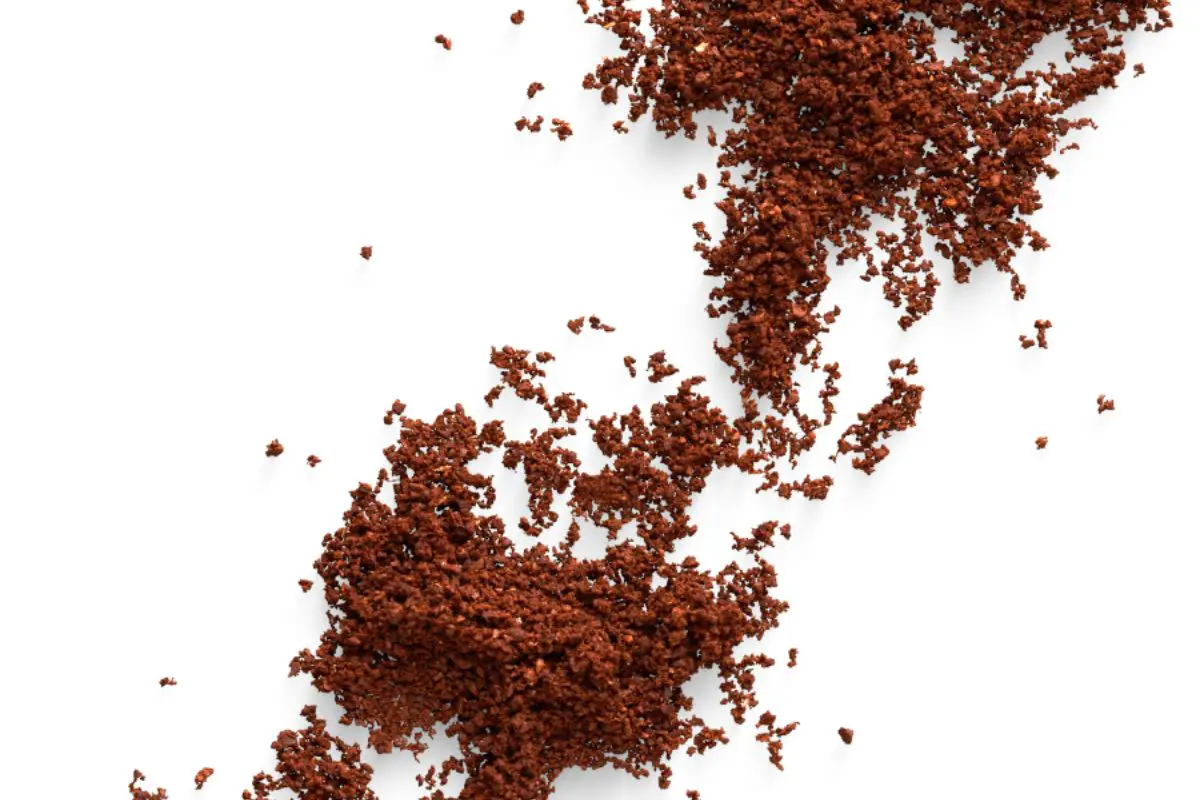Coffee grounds are the byproducts or leftover results of the coffee preparation process. When brewing your coffee, you mix hot water with ground coffee or coffee beans. After drinking your coffee, you may notice some leftover grounds on the bottom of your cup.

Usually, coffee grounds vary in size and shape. They look like needles, beans, or small grains. While most people regard coffee grounds as waste, some people have developed ways how they can reuse them. This article will discuss everything you need to know about coffee grounds. Read on!
What Do Coffee Grounds Look Like?
As mentioned earlier, coffee grounds resemble needles, beans, or small grains. They vary in shape and size. Usually, coffee grounds are the leftovers or byproducts of the coffee preparation process. Sometimes you’ll find coffee grounds stuck inside your coffee maker or in other situations, you’ll find coffee grounds at the bottom of your cup after drinking your coffee. Often, most people throw away used coffee grounds as waste. However, there are few ways to reuse coffee grounds. Let’s discuss some of these ways.
How to Reuse Coffee Grounds
Here are some practical uses of coffee grounds around your home as well as your garden. They include:
1. Use Coffee Grounds as Fertilizer
You can use your coffee grounds in your garden as fertilizer. Most soils lack the essential nutrients required by the plants for their growth. Additionally, as plants grow, they absorb nutrients from the soil thus leaving it depleted. Therefore, coffee grounds can be used to add nutrients to the soil since they contain several minerals for plant growth. These minerals include magnesium, calcium, potassium, phosphorus, iron, magnesium, and chromium.
Equally important, when coffee grounds are used as fertilizer in your garden, they improve your soil’s drainage, aeration, and water retention. Coffee grounds also help absorb heavy metals that may otherwise contaminate your soil. What’s more, coffee grounds will attract worms such as earthworms that are beneficial to the soil and plants.
2. Use Coffee Grounds for Compost
Another way to reuse your coffee grounds is to compost them for later use. Composting is the process of changing organic items into a rich material known as humus or compost. Adding compost to your garden helps improve the soil by allowing it to hold onto more water and nutrients, thus improving the growth of your plants. Compost that’s made with coffee grounds is richer compared to that without. Furthermore, coffee grounds contain nitrogen that worms love. Therefore, adding coffee grounds to the compost will attract worms that help decay organic materials.
3. Use Coffee Grounds to Repel Pests
Coffee grounds contain compounds such as diterpenes and caffeine that are toxic to insects and thus keep them away. Some of these insects include bugs, mosquitoes, beetles, fruit flies, ants, and cockroaches. To keep insects away from your garden, sprinkle coffee grounds around your plants. Furthermore, coffee grounds can also help keep pests away from your home. All you need to do is sprinkle them around your home and outdoor sitting areas.
4. Use Coffee Grounds for Acid-Loving Plants
You can use coffee grounds for your acid-loving plants. They include carrots, blueberries, azaleas, radishes, hydrangeas, lily of the valley, and rhododendrons. However, keep in mind that plants like tomatoes don’t love acid. Therefore, don’t use coffee grounds around such plants. Equally important, avoid the use of coffee grounds on young plants or seedlings since caffeine in the grounds can stunt their growth.
5. Neutralize Odors
Coffee grounds can help eliminate or neutralize odors in your home or fridge. The nitrogen in coffee grounds is what helps neutralize foul smells such as those of sulfur. You can use coffee grounds in your fridge or freezer to eliminate odors from spoilt foods. Additionally, you can put them in your shoes, drawers, gym bags, or other areas that you need deodorizing.
6. Use Coffee Grounds to Exfoliate Your Skin
Coffee grounds can be used to exfoliate your skin, thus removing dead cells and dirt from it. This is a result of the coarseness of the grounds. To do this, simply mix some coffee grounds with coconut oil or some water and scrub your face using the mixture. What’s more, coffee grounds have antioxidant properties that help protect your skin from sun damage.
Conclusion
Basically, coffee grounds are the byproducts of the coffee-making process. They resemble needles, small grains, and beans. Coffee grounds vary in shape and size. Additionally, they contain essential minerals such as calcium, magnesium, nitrogen, potassium, and phosphorus that can help in the plant’s growth. Therefore, instead of throwing away coffee grounds as waste, you can creatively use them in your garden as fertilizer, to repel pests and insects, for compost and mulch, to remove metals from the soil, improve the soil’s drainage and water retention among other uses.